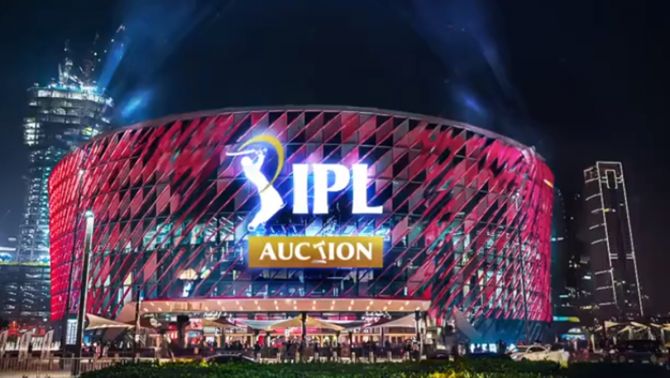Lower-paid IPL players, domestic or foreign, should be able to try their luck in other T20 tournaments.

The eye-watering bid for Australian fast bowler Mitchell Starc dominated the headlines, as did bids worth Rs 230.45 crore (Rs 2.3045 billion) that Indian Premier League franchisees spent on 72 players in the 'mini-auction' in Dubai, December 19, 2023.
These numbers are justifiably taken as an indicator of the money-spinning capabilities of the IPL, which attained Decacorn status in the 2023 season with a brand valuation of $10.7 billion, according to brand valuation consultancy Brand Finance.
But these big bucks actually disguise a structural problem in this game-changing tournament, and that may become evident later.
The problems stem from its American-style closed format without the dynamics of promotion and relegation within domestic competitions that make European and South American football such fast-growing, global businesses.
This matters because of the enormous inequalities in player salaries, between stars and the rest, and between Indian and foreign stars (in the IPL, auction prices largely represent player salaries.)
In the Kolkata Knight Riders team, player salaries range from Rs 24.75 crore (Rs 247.5 million) for Starc to Rs 20 lakh (Rs 2 million) for a clutch of lesser-known batsmen and all-rounders.
The highest-paid Indian star, Rohit Sharma of Mumbai Indians, earns Rs 16 crore (Rs 160 million). This is not an unusual situation.
In the English Premier League, on which the IPL is modelled, the salary difference ranges from 400,000 pounds per week for Manchester City midfielder Kevin De Bruyne to weekly earnings of 3,462 pounds for an unknown Nottingham Forest youngster.
Income inequality is inherent to the sporting format, but the key difference is that lowly-paid players in Europe have the choice of mobility.
They can ply their trade in other clubs and earn more, not just in the UK but Europe, South America, and, increasingly, Saudi Arabia.
This is not the case with the IPL because no tournament can match it in monetary terms.
In theory, lower-paid IPL players, domestic or foreign, should be able to try their luck in other T20 tournaments, South Africa's SA20 and the UAE's International League T20 League being the key ones (Australia's Big Bash League, other significant tournament in this format, allows only two foreign players per team).
The problem here is that many of the owners of IPL franchisees own teams in these leagues.
In the SA20, for instance, IPL franchisees own all six teams. The UAE edition has several overlapping ownerships, such as Kolkata Knight Riders, Mumbai Indians, and Delhi Capitals.
Since these tournaments are scheduled at different times of the year, franchise owners get to sign up stars from their IPL squads for them.
Such overlapping ownership, again, restricts player mobility and choice and is an issue the International Cricket Council should address.
Coupled with this is the fact that, as a recent report in The Telegraph, UK, showed, despite all the crores sloshing around, IPL players are relatively underpaid.
Where teams in other tournaments transfer between 50 and 70 per cent of their revenues to the players, IPL franchisees transfer, on average, just 18 per cent.
These problems, which amount to limited negotiating abilities for players, are overlooked because cricketers today are earning incomes unheard of just a decade ago.
But each auction raises the bar significantly, and the IPL may find itself facing these issues sooner rather than later.
Feature Presentation: Aslam Hunani/Rediff.com












